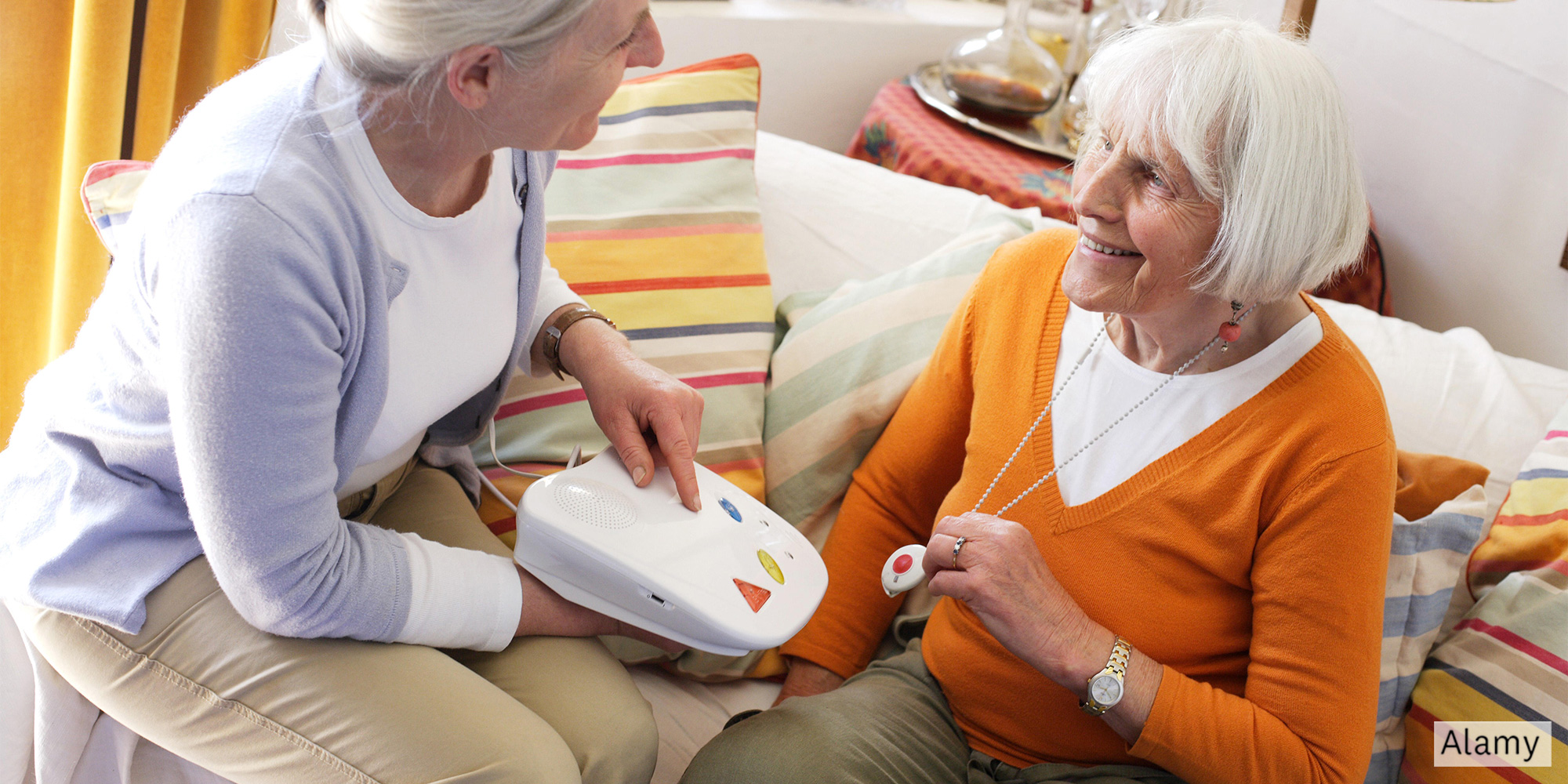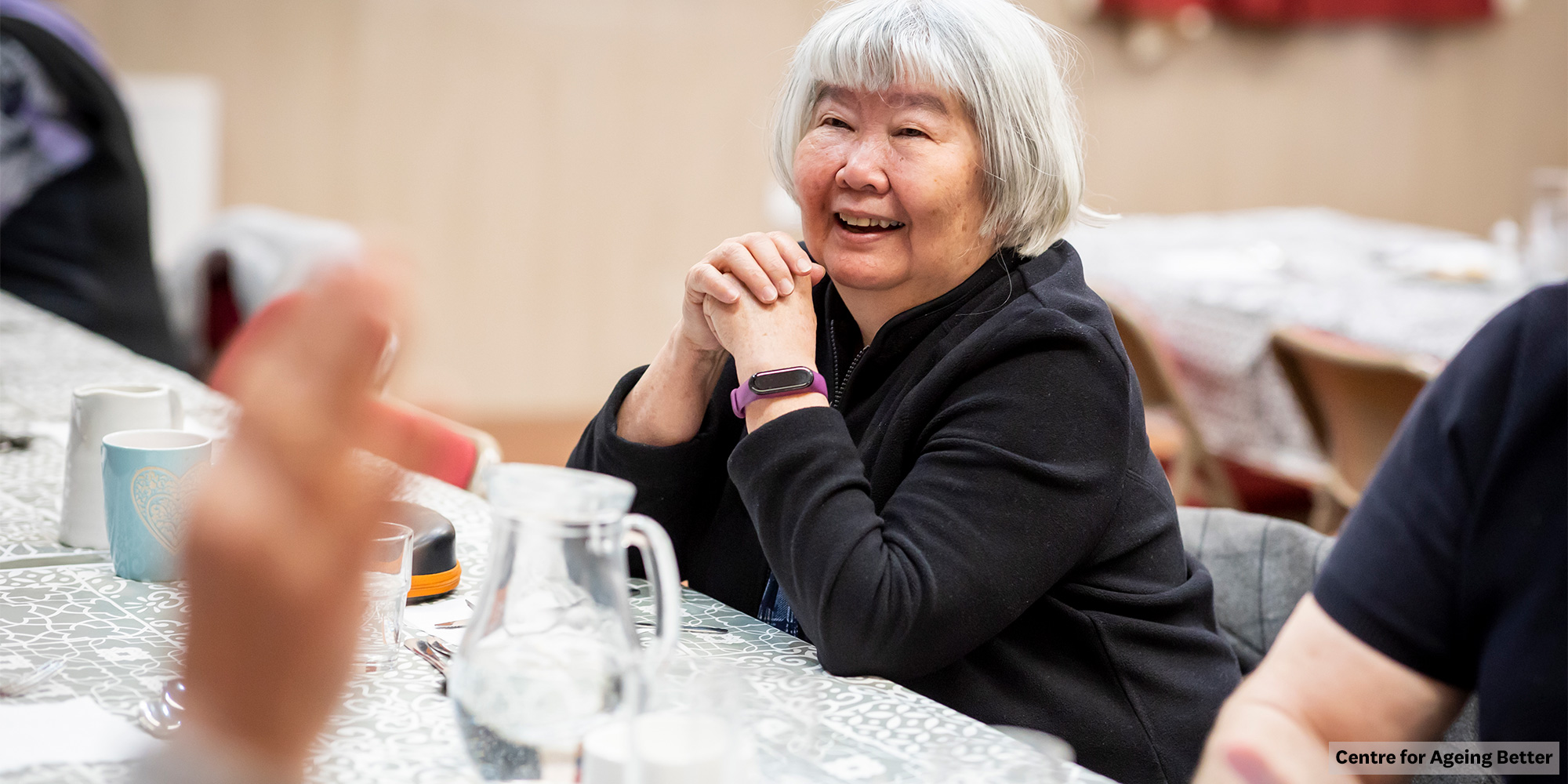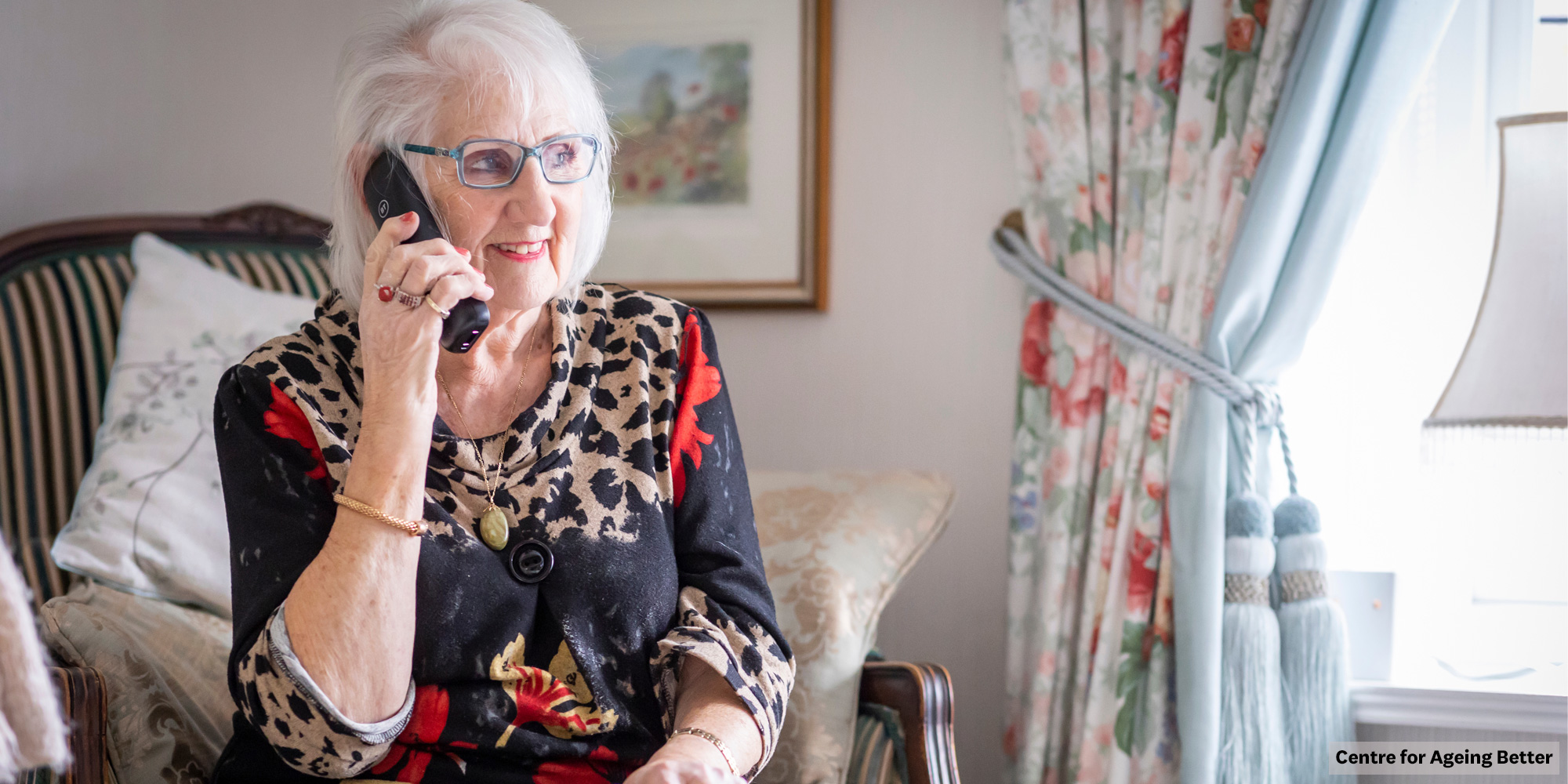By clicking a retailer link you consent to third-party cookies that track your onward journey. This enables W? to receive an affiliate commission if you make a purchase, which supports our mission to be the UK's consumer champion.
Telecare services explained

Telecare services are designed to keep you safe by flagging potential dangers to family and carers, or sending a warning to a call centre if there's a problem or an emergency in the home – such as a fall, inactivity, fire, flood or gas leak.
This can give peace of mind and support so that you or a loved one can keep living more independently.
It also provides reassurance to family and friends who may not be able to call in as often as they might like.
Here we explain the different types of telecare services available in the UK, how to get a system installed, costs and more.
Types of telecare systems
Telecare or telehealth systems can take the form of personal alarms, sensors placed around the home, and other features such as medication reminders.
Telecare is just one form of technology-enabled care, which can give you greater control over your life and help to keep you safe and well.
Other technology-enabled care can include anything from self-tipping kettles to video doorbell systems.
You needn't pick just one type of telecare, and you might find that a combination of different systems works best for you.
Personal alarms

The most basic level of telecare is a personal alarm system.
This involves having a portable pendant, watch or similar gadget, which, when pressed, sends an alert to an emergency response centre via the base unit in your home.
Some types of personal alarm will also respond automatically to a detected fall, rather than needing you to press a button.
Help centres typically provide 24-hour monitoring, every day, and staff will decide if you need emergency services or if they need to call a chosen, trusted contact.
You’ll generally need to pay an initial setup fee and a monthly or annual cost for the ongoing telecare service.
Bear in mind that an analogue (landline) telecare alarm system may not function as intended in homes with an internet connection, or that have been upgraded as part of the nationwide analogue-to-digital landline switchover.
If you have a telecare system, you should contact your landline provider to let them know as soon as possible. If you are thinking of getting telecare, make sure you opt for a digital service that is switchover-ready.
See our full guide to the digital switchover for more.
Pros of personal alarms:
- Call centres are staffed 24/7, 365 days a year.
- Can be set up to alert your family or carer before a call centre if you prefer.
- Doesn’t require you to be tech-savvy to use.
- Can be worn as a pendant or watch according to your preferences.
Cons of personal alarms:
- Cannot provide any proactive or preventive care, and it does not provide your family members or caregivers with ongoing information.
Find out more about choosing the best personal alarm with our independent expert guide
In-home monitoring systems

If your needs go beyond an alarm just in case of emergencies, you might benefit from a smart technology monitoring system.
Smart technology enables you to remotely control internet-connected devices around the home, and it is also increasingly being used as a form of telecare.
This can give carers and loved ones the chance to take more proactive and preventive care, for example inactive fridge sensors might send a warning that a person isn't eating.
Smart devices, such as movement sensors and smart plugs, are connected to a base unit using a wi-fi signal. Alerts are sent directly to family, friends or a carer via a broadband or mobile phone connection.
Pros:
- Activity around the home can be monitored on a smartphone or tablet by your family, friends or carers.
- The technology can learn about your daily routine by identifying regular activities, such as what time you normally get up, go to the toilet or boil the kettle. This can be used to help manage your care needs or detect potential problems.
Cons:
- Some systems depend on a reliable wi-fi signal and broadband connection.
- More specific sensors and systems that cover the whole house will be pricier.
Don't miss our pick of the best mobility scooters and best stairlifts for making day-to-day life easier
Telecare features to look out for
It's essential that the telecare you choose is suited to your, or your loved one's, needs. Before you shop around, it's worth considering what's likely to be important for you. Below are some features to consider:
- Bed or chair sensors Positioned over or under a mattress or on the seat of a chair, these can detect if someone moves or falls from their bed or chair, or fails to get out of bed.
- Door sensors These let you know when someone enters or leaves the home. An alert could be sent if this happens at an unexpected time of day, or if the front door is left open.
- Epileptic seizure alarm Detects the symptoms of a seizure.
- Fall detectors Send an alert if they sense a sudden jolt or downward movement. (Read more in our guide to personal alarms.)
- Flood detectors Sensors in the kitchen or bathroom can spot if water is overflowing or a tap has been left on. They can send an alert or even turn off the water supply.
- GPS tracking device Keep track of someone when they are out and about. It can be attached to clothing, or even built into a pair of shoes.
- Heat/temperature sensors By detecting extreme temperatures in the home, these can spot a fire hazard or avoid the risk of hypothermia.
- Incontinence sensor Provides a warning if a person urinates or vomits while in bed.
- Medication dispensers and reminders Help to remind someone to take their medicine, dispense the correct pills and keep track of what they’ve taken.
- Movement sensors Detect if someone falls out of bed or if they are immobile for too long.
- Smoke or gas detectors Like standard household alarms, these emit a loud alarm if triggered, but can also be set up to transmit an alert to a monitoring centre.
- Wearable alarm pendants Pressing a button sends an alert to a monitoring centre or carer. (Read more in personal alarms.)
Best riser recliner chairs – get a helping hand and sit in comfort with our top picks
How much does telecare cost?

If you're paying for the service yourself, there's usually an initial setup cost followed by a monthly subscription fee.
Costs vary enormously depending on the individual package:
- Monitoring systems that have just one sensor, often located in the kitchen, can cost £15-£20 a month, plus setup fees.
- More complex systems will have higher upfront costs, and could be hundreds of pounds.
Make sure you work out the real costs in advance. Calculate how much it would cost to set up and operate for one year, two years and so on. Also find out if any extra charges could arise – maintenance costs, upgrades or replacing batteries, for example.
If you're registered disabled or have a chronic health condition, you can claim VAT exemption on a range of assistive technology products, which can save you a significant amount of money. Find out more about VAT reductions and exemptions for disabled people and people aged over 60.
How to get telecare
Before setting up a telecare system, you need to understand your care needs.
You can ask for a care needs assessment through your local council. Find your local authority using the Gov.uk website to understand more about your local council and social services.
Or, you can talk through your options at a local Disabled Living Centre or Independent Living Centre – search online to find out if there are any such centres near you.
If you need a specific care package, which might include telecare, it’s important to make an appointment with a specialist such as your GP or an occupational therapist.
If you’re going down the private route and organising telecare yourself, you can search by your postcode for providers in your area with the TSA, an independent telecare advisory body. This will also flag which services are QSF certified (Quality Standards Framework, accredited quality assurance system for the sector), which means they are audited against quality standards.
Make getting in and out of bed easier with our guide to buying the best accessible bed
Can you get telecare for free?

When getting telecare, you'll most likely be expected to pay for initial installation of the system and a continuous fee for the support centre.
However, depending on your needs and financial position, you may qualify for free or discounted telecare if you access it through your local council.
If you go to the council for a care needs assessment and it decides you would benefit from telecare, you can go through another financial assessment to see whether you qualify for some costs to be covered by the council.
Understand how the council can help you with our guide to paying for care at home
Telecare providers: costs compared
If you're looking to buy a telecare system privately, we've rounded up some of the main providers below, along with some info on what they offer and typical costs.
Please note, we have not reviewed these services. This information is to help you compare options and prices more easily. Providers are listed in alphabetical order.
You might have to commit to a minimum term, for example one year, when you purchase.
Personal alarms
| Brand | Alarms available | Cheapest digital product | Most expensive product | Useful info | QSF certified? |
|---|---|---|---|---|---|
| Careium | Indoor personal alarm, outdoor personal alarm | £49.99 setup, then £18 per month | £49.99 setup, then £26 per month | Yes | |
| HelpAlert | Home lifelines, alert watches, pendants – all available with or without fall alerts | £49.99 setup, then £16.99 per month | £49.99 setup, then £25.99 per month | HelpAlert is a Which? Trusted Trader for installation | No |
| LifeConnect24 | Personal alarm, fall detector alarm, GPS alarm | £45 setup, then £16.99 per month | £45 setup, then £22.99 per month | Sells some analogue alarms which will not work with the digital switchover. We recommend you avoid analogue alarms. | Yes |
| SureSafe | Personal alarm pendant, watch, fall detector alarm, dementia alarm, seizure alarm | £175.45 setup, then £22.99 per month | £211.45 setup, then £22.99 per month | Sells some analogue alarms which will not work with the digital switchover. We recommend you avoid analogue alarms. | No |
| Taking Care | Personal alarm, fall alarm, GPS alarm | £29.99 setup, then £16.50 per montht | £30 setup, then £29.99 per month | Yes – Devon and Chichester | |
| Telecare24 | Pendant alarm, fall alarm, GPs alarm | £45 setup, then £15 per month | £45 setup, then £21 per month | No |
Prices correct as of July 2025. Prices are without VAT, and using the cheapest payment option available, eg annual over monthly.
Unless otherwise stated, the brands listed here only sell digital alarms that are ready for the digital switchover.
The TSA's Quality Standards Framework is a voluntary initiative that measures companies against a set of standards. The brands that are not listed against QSF certification may meet the standards but have not signed up to the certification. You can read the full list of certified organisations on the TEC Quality website.
In-home monitoring systems
| Brand | Products available | Initial cost | Service fee | Additional sensor cost | QSF certified |
|---|---|---|---|---|---|
| Canary Care | 4 or 6 refurbished sensor package, including door magnet | £228.65 for 4 sensors and base | £18 per month | £40 | No |
| Careium | Single activity sensor for the kitchen | £49.99 setup cost | £19 per month | n/a | Yes |
| Carephone | Smart digital photo frame that can make video calls and monitor living environment | £504 to £665 upfront, depending on 1-3 years of software subscription | Included in upfront cost | n/a | No |
| Taking Care | Single activity sensor for the kitchen | £29.99 setup cost | £16.99 per month | n.a | Yes – Devon and Chichester |
Prices are without VAT, and using the cheapest payment option available, eg annual over monthly.
The TSA's Quality Standards Framework is a voluntary initiative that measures companies against a set of standards. The brands that are not listed against QSF certification may meet the standards but have not signed up to the certification. You can read the full list of certified organisations on the TEC Quality website.
Staying safe with telecare: why you need a key safe
If you install a telecare device, it’s a good idea to get a key safe fixed to the outside of your home, in case someone needs to enter the house in an emergency.
It's recommended to get a police-approved (also known as Police Preferred) key safe; it may be more expensive, but it’s likely to be more reliable.
Examples include the SUPRA C500 and Ark Tamo, which you can find at specialist retailers such as keysafe.co.uk, and some mainstream online retailers. We've rounded up some prices below:
Also, remember that telecare systems are not fail-safe and correct maintenance of products, including checking the batteries regularly, is vital.
If you are buying different products, where possible, stick to the same provider. This means there will be greater cohesion between the different aspects of your telecare system.
Do you need the internet for telecare?

The UK’s landline network is currently being upgraded from an analogue system to a digital connection – a process known as the digital switchover – which will be completed in 2027.
If you already use telecare services, you should contact your landline provider as soon as possible to ensure your system will still work.
Ofcom has also made it a requirement for telecoms providers to identify people who are reliant on their landline and provide them with a free back-up option in case there's a power outage.
Your telecoms provider will flag you as a telecare user on their system, which will mean they can give you an enhanced support service and quicker response time.
For a telecare system that uses a landline (analogue) connection, rather than wi-fi or Sim (digital), they will defer migrating you to digital services to allow for time to replace your device.
We think some providers aren't doing enough to protect customers, see the full story into telecare providers still selling analogue alarms.
If you’re not sure whether your device is digital or analogue, contact your provider – either your local authority or the private provider – to check whether the device will still work with a digital landline. They should be able to support you.
See our full guide to the digital switchover and how it affects telecare and personal alarm services for more info.
Find the best broadband deals in your area with our comparison tool
How to make sure your personal alarm is ready for the digital switchover
To make sure your personal alarm is futureproofed for upcoming phoneline changes, check the following before buying:
- You can tell if a device is compatible with the digital switchover by looking for words and phrases like 'IP', 'VoIP-compatible', 'digital-ready', or 'cloud-based'.
- Avoid listings that only mention 'analogue phone line' or 'PSTN', as these devices won't work after the digital switchover and will last only until 2027 at the very latest. If the product description says 'plugs into standard phone socket' or 'uses traditional landline', it's likely to be analogue.
- Avoid older models like Tunstall Lifeline VI, which are analogue.
- Look for official or certified distributors. Be extremely cautious with listings on eBay or Amazon from private sellers.
- Check if the device includes ongoing support or software updates.
- A digital device may require a broadband router, Sim card, or power backup. If you are unsure what's needed, a good private provider should be able to support on this so you can get setup with a futureproofed product.
